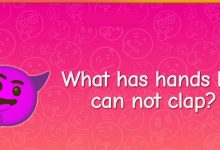
How to boost your creativity flow in challenging times
Any creative professional or enthusiast would agree that there is no switch for creativity. Seeking for inspiration can be a frustrating, stressful activity, sometimes so heavy that takes both our personal and private space. On the other hand, it might strike you when you’re in the middle of a completely different working mode.
Maybe you don’t have new projects or tasks in the pipeline. Still, it’s not that creatives don’t have options. Positivity and consistency amid an empty schedule are vital points to stay active, up to date and strive towards a goal.
For those struggling to find inspiration or lack new challenges, there are simple guides to follow in order to inspire yourself and your environment, while also improve professionally.
Launch a project just for you
Probably the most challenging part in project development is to design anything from scratch. When it comes to personal design projects, the first step is the hardest. Define your goal and ask these questions:
- What would be the goal of this project? Is the primary purpose of attracting new clients? Can I offer this project to a company/start-up that might benefit from it?
- What will inspire me?
- How can I contribute to a broader community?
- How far can I push my self-expression and experimentation?
These simple guidelines will bring you clarity and focus during your work. When projects have a purpose and serve a broader audience, they are more likely to be finished successfully. Once you define the goal, start the research. Read books, watch videos, and talk with people that are not related to the industry. Check their interest and enthusiasm about the idea. Be sharp and concise, so don’t spend hours just accumulating new information. The point is to gain context and fuel ideas.
Show your portfolio online
The light workload is a perfect opportunity to polish your portfolio and present it nicely. Where possible, use contextual mockups or clickable previews. Place UI designs on smartphones, landing pages, or packaging. You already know there are plenty of beautiful templates available for download. When your work is ready, don’t rush to build a website – instead, join a portfolio platform community. Share your most quality work and the one you’d like to show off. Choosing what to expose might be tricky, so consider these guidelines:
- Should this project attract new clients?
- Does this work show a different/distinct style?
- Which technical skills should be displayed?
- Can I tailor the presentation for a specific company/industry?
Multidimensional UI/UX designers highlight common threads and unique characteristics in their work that are recognised as their trademarks. This further identifies and builds the identity of a project, company, or website. Great designers create identities and brand tone. Take, for example, the best bingo sites; you’ll recognise patterns and styles that define one bingo brand or gaming provider. This simple but effective approach could lead to more job opportunities.
Transform and reinvent cancelled projects
Sometimes it’s devastating if the client cancels the project midway. However, this doesn’t mean you can’t explore the project’s potential and possibilities. By revisiting projects and ideas that didn’t turn out as intended, designers may explore alternative approaches and pursue improved outcomes. For example, if you have cancelled doodle videos, combine them with updated voice-overs and visuals. This way, you’ll get the maximum out of the project, it will be finished, and you can present it in the portfolio.
In the end, try to reach out and reconnect with old clients and friends in the industry. If a colleague needs help with a project, it’s possible to include you in it. Referrals, cross-promotions, and teamwork can be highly valuable for your bio. Don’t hesitate to send links to recent projects or ask for opinions or guidance. We often forget that design in every aspect is a unique profession. People who are not directly involved in the work enjoy seeing the time it takes to create something out of nothing.




